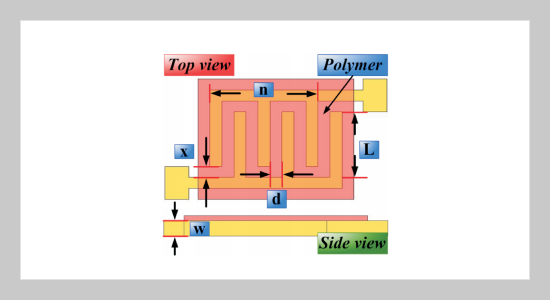Chi-Yuan Lee 1 and Guan-Wei Wu1 1Department of Mechanical Engineering, Fuel Cell Research Center, Yuan Ze University, Taoyuan, Taiwan 320, R.O.C.
Received:
February 9, 2007
Accepted:
March 26, 2007
Publication Date:
June 1, 2007
Download Citation:
||https://doi.org/10.6180/jase.2007.10.2.10
In this study, micro-electro-mechanical-systems (MEMS) fabrication technology was employed to fabricate an array of micro sensors to monitor the temperature and humidity in situ within the membrane electrode assembly (MEA) of fuel cells. The advantages of array-type micro temperature and humidity sensors are not only their small size enabling them to be placed on MEA, but also their high sensitivity and accuracy preserved at the same time. The experiment involves temperatures from 30 to 100 ºC, the resistance varied from 51.80 to 57.06 Ω. The accuracy and sensitivity of temperature sensor is less than 0.3 ºC and 1.5 10-3/ºC. The humidity sensor showed that the capacitance changed from 37.05 to 39.51 pF, the relative humidity from 20 to 95%RH, and the accuracy and sensitivity is less than 0.25%RH and 0.03 pF/%RH.ABSTRACT
Keywords:
MEA, MEMS, Micro Sensors
REFERENCES
















